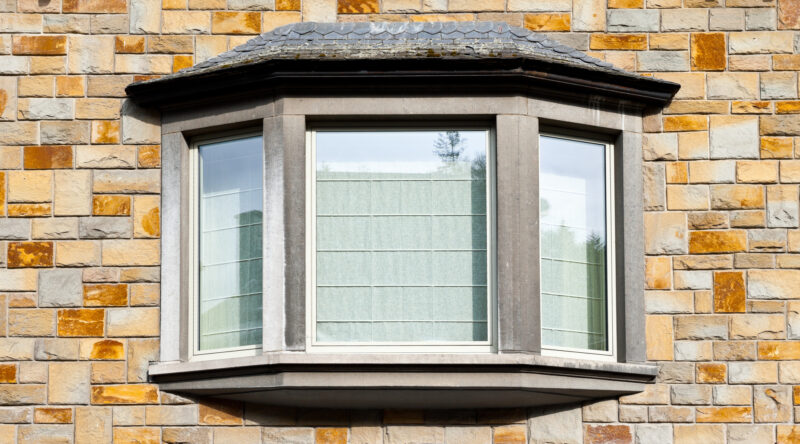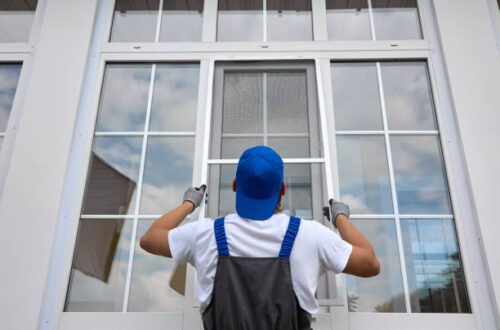Bay and bow windows are appealing architectural elements and can increase any home’s look and curb appeal. Both types of windows have been used for years and show no sign of leaving the market any time soon.
The popularity of these windows is partly attributed to their ability to accent the current features of any home or building, all while providing plenty of natural light. Both outside and inside a room, bay and bow windows can provide a unique element that helps open up the space.
If you are trying to decide between bow or bay windows, but are not clear on the main differences, keep reading. Here you can learn more about each of these window options to help you choose the one best suited for your home.
The Look
Bow and bay windows both protrude from a home’s outside wall. There will be a corresponding alcove or ledge inside the home.
Each window has more than one section that fits together, creating a single unit. While this is true, there are some distinct and defined differences between these two types of windows.
Bay Windows
The bay window is made up of three windows, each set at an angle. The window in the middle is usually wider than the other two.
Usually, the center window is a picture window, which you can purchase from a Renewal by Andersen dealer. While there are no rules about what style windows you can install, the two on the sides of the large window are typically double-hung or casement styles.
Bow Window
The bow window is made up of four to six windows. These are installed side-by-side and create a curved structure.
Bow windows are usually wider than the bay window because of the total number of individual windows used in the design. While this is true, the bow window will not stick out as far or create as large of an alcove as bay windows do.
This style of window is popular in Victorian-style homes. However, it also looks great in was more modern homes.
Cost Considerations
Bow windows are approximately two and a half times the cost of a like-sized flat window. This is because bow windows are not single windows.
In some options, the entire window is custom-made, and the installation process is much more complex than bay windows.
To install a bow window, the process is more complex, too. It usually involves tying in the soffit or a new hip roof to seal out water and air.
Natural Light
One way that bow and bay windows add to a room is by providing plenty of natural light. These windows create additional window space on any wall, which lets light be captured from various angles.
This means that west or east-facing windows receive even more natural light depending on the time of day.
Because bow windows are made of additional panes of glass and don’t use as much framing, they are often much better at allowing natural light than bay windows. Keep in mind, though, that the ability to do this is dependent on the landscaping and architectural features of your home.
Make sure to consider the “big picture” when choosing between these window styles.
Ventilation and Air Flow
It can be problematic to have a window that opens when installing bow windows. Bow windows are installed close together, which means the opening devices have to be close to one another.
If they are not installed properly, it will impact the curved, elegant look. This is why most experts recommend choosing fixed windows if you choose a bow window.
However, with bay windows, the side ones are usually double-hung or casement. This lets you open them and get fresh air in your house, without impacting the window’s look.
Installation Methods
It is important to note that installing bow or bay windows is a larger job than replacing a traditional flat window. However, there are also differences between these two windows, even though they are similar.
Due to the larger weight and size, bow windows are more challenging to install. Regardless of whether you choose a bow or bay window, installation is not typically a DIY job.
Usually, the existing window opening in your home will have to be enlarged and a new frame installed. Additional supports for the extra weight of the new window must be added too.
Unless you have installed windows before or are just extremely handy, installing these windows should be left to the professional.
Resale Value
If you are spending money on new bay or bow windows and professional installation, you can feel confident they will increase your home’s value. Having a nice-looking, energy-efficient window with the right coverings will help attract buyers when you decide to sell.
It doesn’t matter what size or where bow or bay windows are installed in your home; you can feel confident they will help increase the overall value.
Bow or Bay Windows: Choosing the Right Style
When it comes to choosing bow or bay windows, knowing the main differences can help ensure you make the right decision. Keep the tips and information here in mind to choose the style that makes the most sense for your home and budget.
Having the latest information is a must to keep things looking great and efficient when it comes to your home. You can also find more interesting topics about things like pets, money management, and health and beauty by reading our other blogs.






